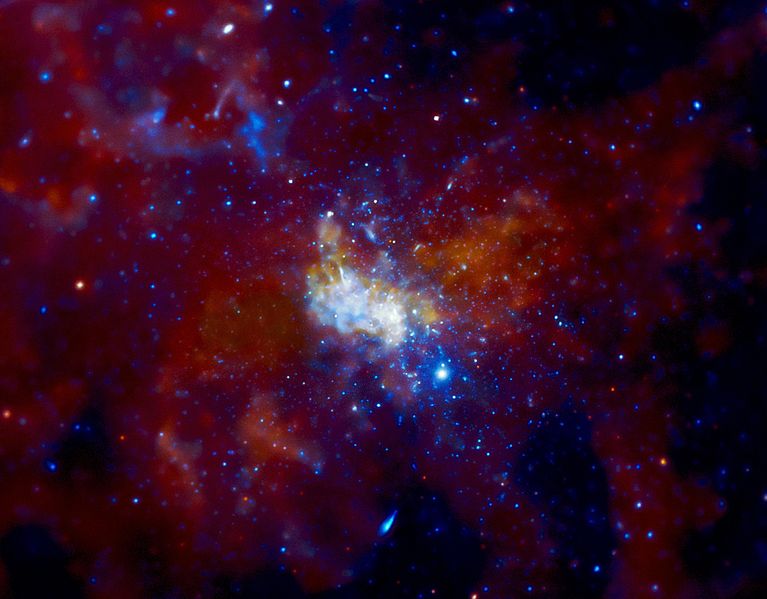Science News
How Much Do Black Holes Eat?
August 20, 2013
by Alyssa Keimach

We tend to think of these scary objects as having voracious appetites, gobbling up everything that gets in their way. But in reality, most black holes surround themselves with discs of gas and dust that swirl around, heat up, and emit lots of radiation. All this activity makes it difficult to determine what’s going on near the black hole itself. Which includes figuring out the black hole’s diet.
If we want to understand something that’s invisible (such as a black hole), we usually have to find creative ways of detecting it. But in order to learn about the black hole at the center of our galaxy, astronomers study the behavior of its surroundings—specifically nearby stars.
They hit the jackpot once they discovered a pulsar near the galactic center. Not only do these rare stars act as precise cosmic clocks, but this one in particular emits an abnormally strong magnetic field (called a magnetar).
Pulsar PSR J1745-2900 was the first of its kind to be found near the galactic center, and at only 0.3 light years away from our black hole (a.k.a. Sagittarius A* or Sgr A*), it tells us a lot about black hole characteristics.
A research team with the Max Planck Institute for Radio Astronomy (MPIfR) was able to measure the pulsar’s magnetic field, which revealed how magnetic fields affect black hole behavior.
“In order to understand the properties of Sgr A*, we need to comprehend the accretion of gas into the black hole,” says Michael Kramer, director at MPIfR. Although black holes have infamously strong gravity, material doesn’t typically fall directly into a black hole; instead, the material forms an accretion disc before slowly flowing toward the black hole at the center.
“However, up to now,” according to Kramer, “the magnetization of the gas, which is a crucial parameter determining the structure of the accretion flow, remains unknown. Our study changes that by using the discovered pulsar to probe the strength of the magnetic field at the start of this accretion flow of gas into the central object.”
Knowledge of pulsars’ consistent frequencies illustrates the effect of the black hole on the pulsar. Radio waves usually polarized along a plane are now rotating in a corkscrew motion, similar to the radiation emitted from black holes themselves.
“The rotation is way higher than anything seen in the Galaxy with the exception of Sagittarius A*,” says Ralph Eatough of MPIfR who measures the black hole’s radio waves and outward streaming matter.
The paper, published last week in Nature, concludes that the twisted magnetic fields might slow black holes’ diet, putting the brakes on infalling gas. Sgr A* is “not feeding to its full potential,” says Eatough.
Alyssa Keimach is an astronomy and astrophysics student at the University of Michigan and interns for the Morrison Planetarium.
Image: NASA